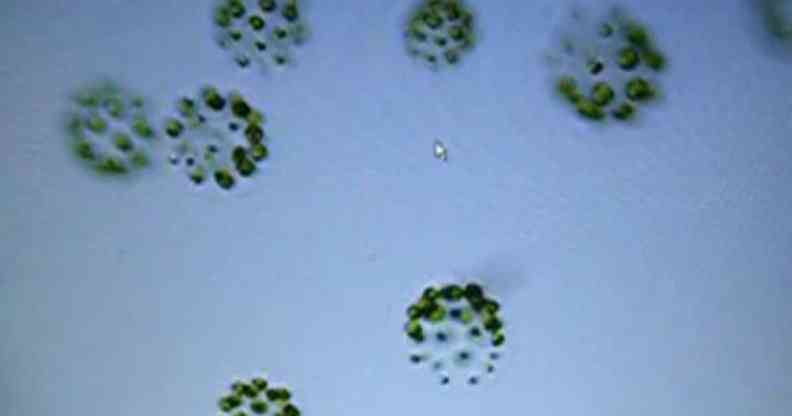Algae species with three sexes that can all mate with each other discovered by scientists

The new species of algae, Pleodornia starri, pictured under a microscope (Screenshot: Eureka/HISAYOSHI NOZAKI)
Scientists in Japan have discovered a new species of freshwater algae that’s naturally evolved to have three different sexes, including one they’ve described as “bisexual”.
Found by the University of Tokyo in a Japanese river, Pleodornia starri (P. starrii) is the first case of algae or fungi to have three distinct sexes, all of which can breed in pairs with each other.
The three sexes are male, female, and a third sex researchers call “bisexual” in reference to the fact that it can produce both male and female sex cells in a single genotype.
“It seems very uncommon to find a species with three sexes, but in natural conditions, I think it may not be so rare,” said University of Tokyo associate professor Hisayoshi Nozaki, who collected the algae samples.
His team notes that this algae is different from a hermaphrodite because it developed its sex cells under a “normal” gene expression, while a hermaphroditic individual who can produce both the male and female sex cells usually exists due to “unusual” gene expression.
They are particularly interested in Pleodornia starri as the algae and its close evolutionary cousins all use different sex systems, so they are useful models to study the genetics of how sex evolved.
“This finding was possible because of our very long-term experience of going on field collection trips and our practice growing and studying algae. Continued, long-term studies are very important to unveil the true nature of species in the natural world,” Nozaki said.
Algae with three sexes is not alone in nature
Many creatures in nature exist outside the gender binary. Trisexual characteristics are often seen in invertebrates like worms, while sequential hermaphrodites are animals that naturally change their sex from one to another, like clownfishes, oysters and other shellfish.
Meanwhile gynandromorphic animals contain male and female organs at once, like some sea slugs, lobsters and butterflies.
There are also cases of “gender fluid” animals that naturally adapt certain gendered characteristics to survive, like a lioness in Botswana that grew a mane and started roaring like a male to fool invading prides.

